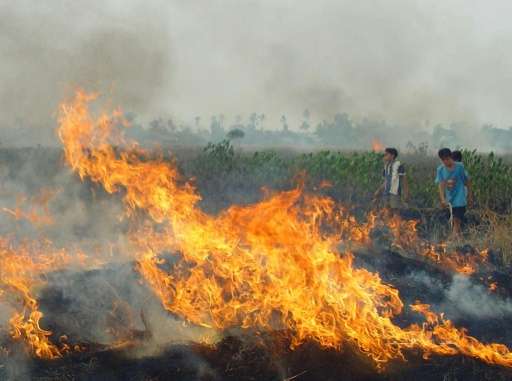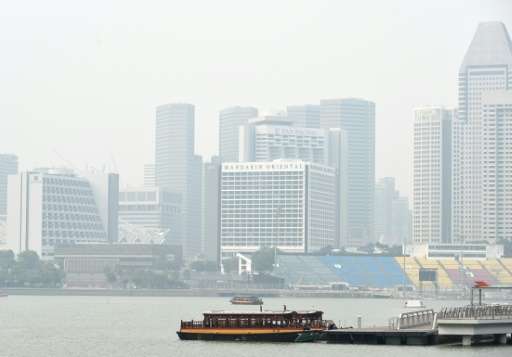Each year Indonesia irks its neighbours Malaysia and Singapore with a thick haze from it forest fires, many deliberately lit to clear land for agriculture
Smog from forest fires in Indonesia on Tuesday prompted the cancellation of flights and warnings for people to stay indoors, while pushing air quality to unhealthy levels in neighbouring Singapore and Malaysia.
The thick haze came from blazes on western Sumatra island and the Indonesian part of Borneo island, which are home to huge palm oil and pulp and paper plantations.
Vast tracts of land are cleared on both islands for plantations using illegal slash-and-burn methods, causing fierce fires every year during Indonesia's dry season that choke the region with acrid smog.
In Sumatra's Riau province, air quality reached hazardous levels and visibility dropped as low as 100 metres (330 feet), with the airport and schools in the provincial capital closed and people warned not to venture outdoors.
Flights were also disrupted at other airports in Sumatra.
In Singapore, east of Sumatra, haze shrouded the skyscrapers of the city-state's skyline and air pollution rose above the "unhealthy" level.
Campaigning for elections due on Friday, Prime Minister Lee Hsien Loong raised the perennial problem at a rally: "What do we worry about? Just look around you, at the grey haze."
Several areas in western Malaysia, including the capital Kuala Lumpur, recorded unhealthy air quality. Western Malaysia lies across the Malacca Strait from Sumatra.
A general view shows buildings in the business district blanketed with haze in Singapore on September 8, 2015
Efforts to tackle the fires with water-bombing helicopters and by chemically inducing rain were being hampered by poor visibility due to the smog, which was preventing aircraft from flying, Indonesia's disaster agency said.
The fires started raging intensely several days ago, prompting Indonesian President Joko Widodo to visit Sumatra at the weekend and pledge a crackdown on companies that break the law by starting blazes.
Pressure to stop the annual outbreaks of smog has increased since 2013 when Southeast Asia suffered its worst air pollution crisis for more than a decade, with haze levels hitting a record high in Singapore.
But attempts by the 10-member Association of Southeast Asian Nations to resolve the problem have moved only slowly, with repeated meetings on the subject producing little concrete.
© 2015 AFP
























